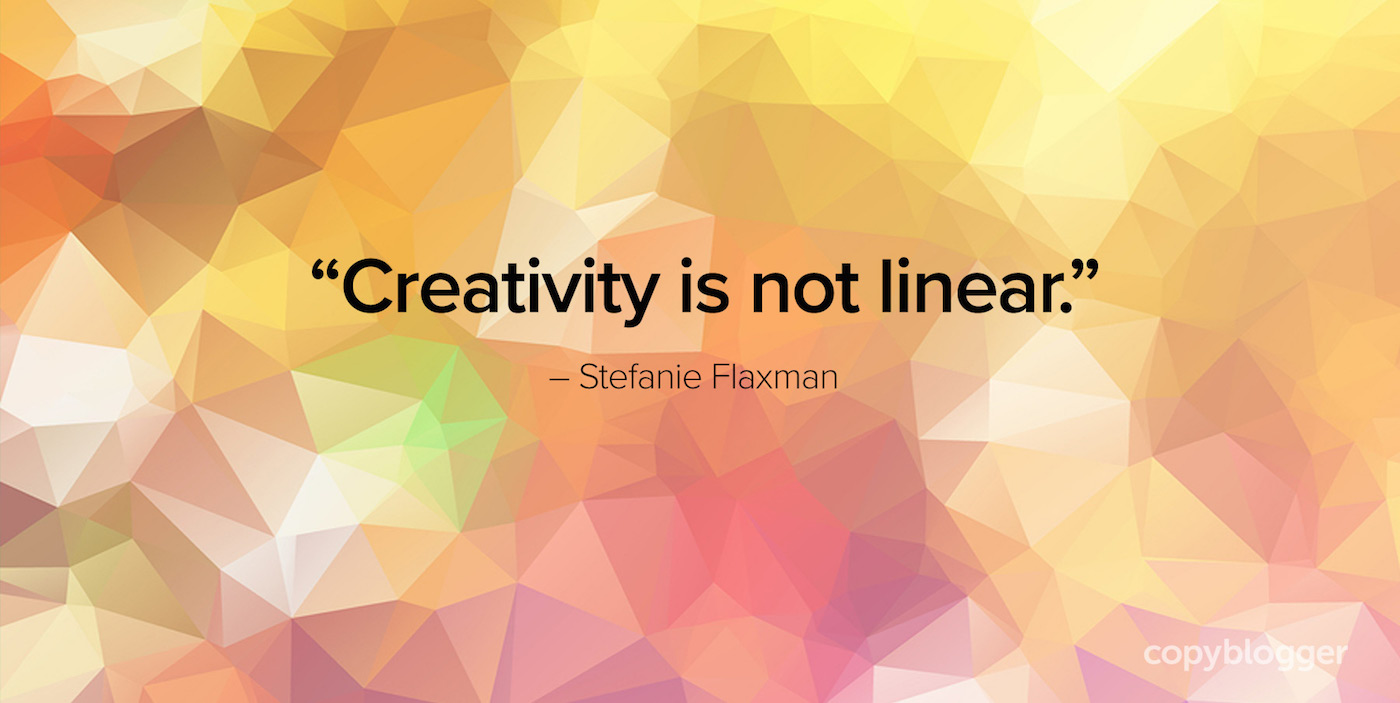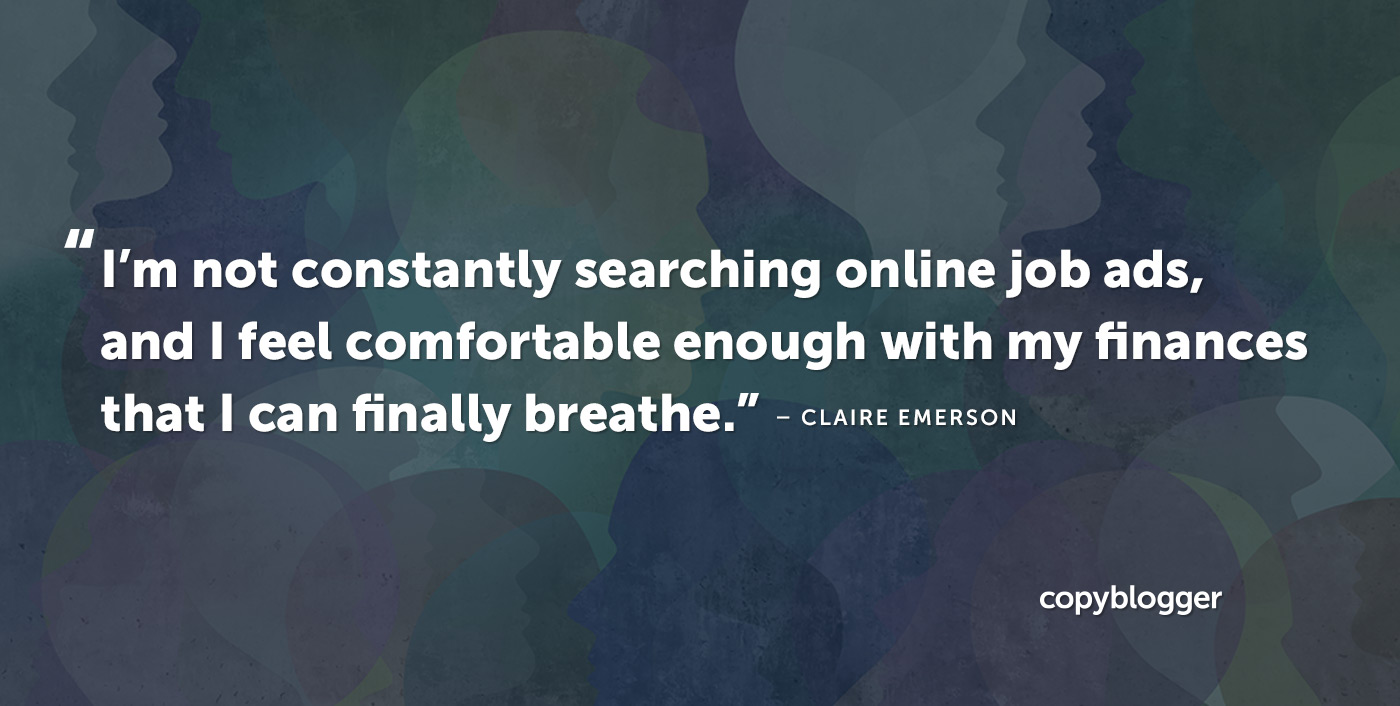Yesterday, I mentioned the makings of a successful creative team that runs like a well-oiled machine.
As the creative-strategic hybrid model becomes more pervasive in modern content marketing, there’s a great opportunity for creative people who produce outstanding work on demand.
Whether you’re an employee of a company or a freelancer, your skills and sensibilities can make you an important collaborator instead of someone who can easily be replaced.
And there’s a reason why I’m emphasizing “creative” here, and not just any team of colleagues.
Creative work confuses onlookers
The creative process tends to not look like “work.”
A full-time writer’s day has the potential to baffle someone from another field.
Even the most nonjudgmental soul might conclude:
“That person’s not really working, right?”
But underneath the surface, that writer is performing all of the steps required to make connections that are more interesting and thought-provoking than what their audience has seen elsewhere.
If the final product is polished and smart, that’s what matters.
Of course, if it looks like someone isn’t working and they don’t meet their deadlines … sure, that’s a problem.
But that scenario isn’t what I’m talking about. I’m talking about how professionals operate when art is business.
How do you organize and navigate such an unstructured environment?
Here are six actions that build trust as you demonstrate your dedication to your creative team.
1. Make someone’s life easier
Content needs to get published on time, every time, so create or fine-tune systems and processes that complement the flexible nature of a creative environment.
Freedom should encourage you to be more responsible, not less.
Look for ways to support your colleagues’ innovative ideas.
Think “make someone’s life easier,” rather than “step on someone’s toes.”
2. Don’t settle
The draft version of the introduction to this article had this sentence:
“As the creative-strategic hybrid model becomes more pervasive in modern content marketing, there’s a great opportunity for creative people who … you know … have their shit together.”
I edited that to:
“As the creative-strategic hybrid model becomes more pervasive in modern content marketing, there’s a great opportunity for creative people who produce outstanding work on demand.”
When I actually publish the phrase “have their shit together” in a post (other than this example), it will be because I’ve decided that it’s the absolute best description for what I want to communicate.
Many times, however, there’s different language that will be more effective because it’s more specific.
Aim for precision to ultimately publish better writing.
3. Listen to the voices in your head
When I was considering whether or not I wanted to write about Pooblíche for April Fools’ Day, I entertained two voices in my head.
I called the first voice Fifth Grade Teacher.
She’s quite cautious when it comes to publishing, and she makes perfectly reasonable points about the risks of potentially off-color humor. FGT means well and does have your best interest in mind.
I called the second voice Sir Richard Branson.
He doesn’t want to play it safe; SRB wants to be remarkable and live by the motto:
“Screw It, Let’s Do It”
Branson won the debate.
This point boils down to showing your coworkers that you’re aware of different perspectives, so they feel confident that you don’t just mindlessly rush ahead when you have an idea.
4. See what others overlook
A strong final piece of content has been intentionally crafted.
You’ve double-checked:
- Definitions
- Facts
- Sources
We say, “Know the rules to break the rules” here at Copyblogger because the best version of your message might not strictly follow proper grammar.
It might also go against advice like avoiding passive voice or ending a sentence with a preposition.
But passive voice should be a choice, not an accident.
5. Beware of too much editing
A writer’s voice is their greatest asset when it comes to standing out, so you don’t want to over-edit yourself or your coworkers in an attempt to improve a piece of content.
Here’s a useful editing process from Sonia that strikes the right balance:
“When I edit content, whether or not I wrote it, the first thing I do is read through the piece and get rid of unnecessary words.
Here’s an example from one of my podcast scripts. There was a lot of verbal filler that could be trimmed without losing meaning.
I want to talk about something
that seems to me to keepthat keepsso manyfolkswho could be doing great workfrom getting recognition.Then, I usually do a second pass and look for even more unnecessary words. These critters are sneaky — they like to hide out in your writing, often camouflaging themselves as conversational style.
After that, I’ll do a third pass looking for phrases that are too long or just clunky, rewriting as I go. (The read-aloud nearly always finds a few of these.)
In a fourth pass, I look for overly “fancy” words that can be replaced with simpler or clearer ones. By this time, I’ll also have noticed any words that have been overused. For example, when writing this article, I used the word fantastic four times in the original draft.
Our Editor-in-Chief Stefanie Flaxman calls this process “writing exfoliation.” Every pass through the piece will reveal little rough spots that can be smoothed.
By the way, it’s possible to exfoliate a sentence so much that it gets vague or confusing.
What blocks recognition?
That one went too far, if it’s intended to convey the idea from the original sentence above. Your read-aloud step will catch those and give you the chance to restore any lost clarity.”
6. Know when to let go
Watch out for extreme behaviors: An obsessed coworker can be as high-maintenance as a careless coworker.
A combination of both attitudes yields the most productivity.
So, be conscientious, but learn to let go of minor details that don’t affect much.
Fixing a typo doesn’t make bad content good, just as accidentally making a typo doesn’t make good content bad.
If you worry too much, tasks will be more frustrating and take longer to complete.
We all make mistakes, and we can all make corrections when necessary to move on.
Over to you …
When all of these actions are part of your work ethic, the people around you absolutely take notice.
You want to be self-sufficient and supportive of others. An autonomous team player is priceless.
How have you made yourself indispensable to your coworkers or clients?
Let us know about your important contributions to teams in the comments below.









Reader Comments (6)
Hey Thanks for posting! I really enjoy your blog posts.
I totally agree that making someone’s life easier makes you indispensable which in turn makes YOUR life easier!
Keep up the good work.
There’s no downside to being a good coworker.
Hey Stefanie,
Great post! After writing a piece of content, I usually let it sit for a couple of days before editing it. It always amazes me how much easier and effective editing becomes when you go through the content after a few days.
However, it requires more planning and discipline cause I hate not delivering the content on time.
Btw, love point 3 in your [post!
The best writing is indeed a result of planning and discipline. It might look effortless (most great writing does), but creating it is a process.
One of my favorite writers at Copyblogger!
Nice piece once again. English isn’t my first language but I do try to proofread to make my content better. Thanks for shedding light on other aspects of editing content that I had no idea about.
Hey Stefanie, I totally agree with you. In the sense of showing your creative team that you’re aware of the different perspectives, makes the team feel confident and that you are’nt rushy on your idea especially when you are the team lead.
Looking forward to step up on this.
This article's comments are closed.